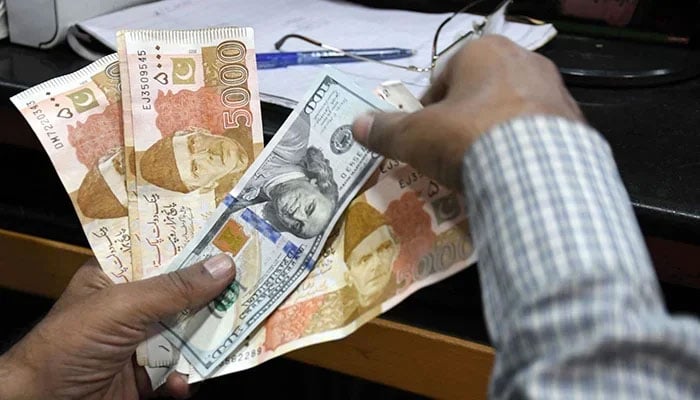KARACHI: The rupee is expected to remain range-bound against the dollar in the coming sessions following the extended Eid holidays.
“We anticipate that the local currency will trade within existing ranges, with a slightly weaker bias next week, as demand for dollars from importers and corporates rises after the currency market reopens on Thursday following a three-day holiday for Eidul Fitr,” a currency dealer said.
“Additionally, a projected slowdown in remittance flows after Eid could impact dollar supplies in the market,” the dealer added.
The rupee declined, closing at 280.36 per dollar in the interbank market on Monday, and it extended its losses, falling to 280.42 on Tuesday. However, the rupee recovered ground, ending at 280.16 on Friday after Pakistan secured a staff-level agreement (SLA) with the IMF for the first review of the ongoing $7 billion loan programme and also agreed to a new $1.3 billion arrangement under the Resilience and Sustainability Facility (RSF).
Investor sentiments were boosted by reports which says the country will get two separate loans from the global lender under the Extended Fund Facility (EFF) and the RSF in coming months. The IMF’s executive board will likely consider approval of $2.3 billion loans for Pakistan. Islamabad expects to secure the loan amount in the first week of May before the upcoming budget for the fiscal year 2025-26.
The foreign exchange reserves held by the State Bank of Pakistan dropped by $540 million to $10.61 billion as of March 21 because of external debt repayments. The total liquid foreign reserves held by the country also decreased by $465 million to $15.551 billion. However, the reserves of commercial banks rose by $75 million to $4.944 billion.
The SBP’s reserves stabilised at $11 billion, attributed to the improvement in the current account balance bolstered by remittances and dollar purchases from currency markets.
However, despite continued dollar buying, the latest decline in reserves shows outflows like external debt repayments. The SBP purchased $5.52 billion from the interbank market between June and December 2024 to bolster its reserves and meet debt obligations.










